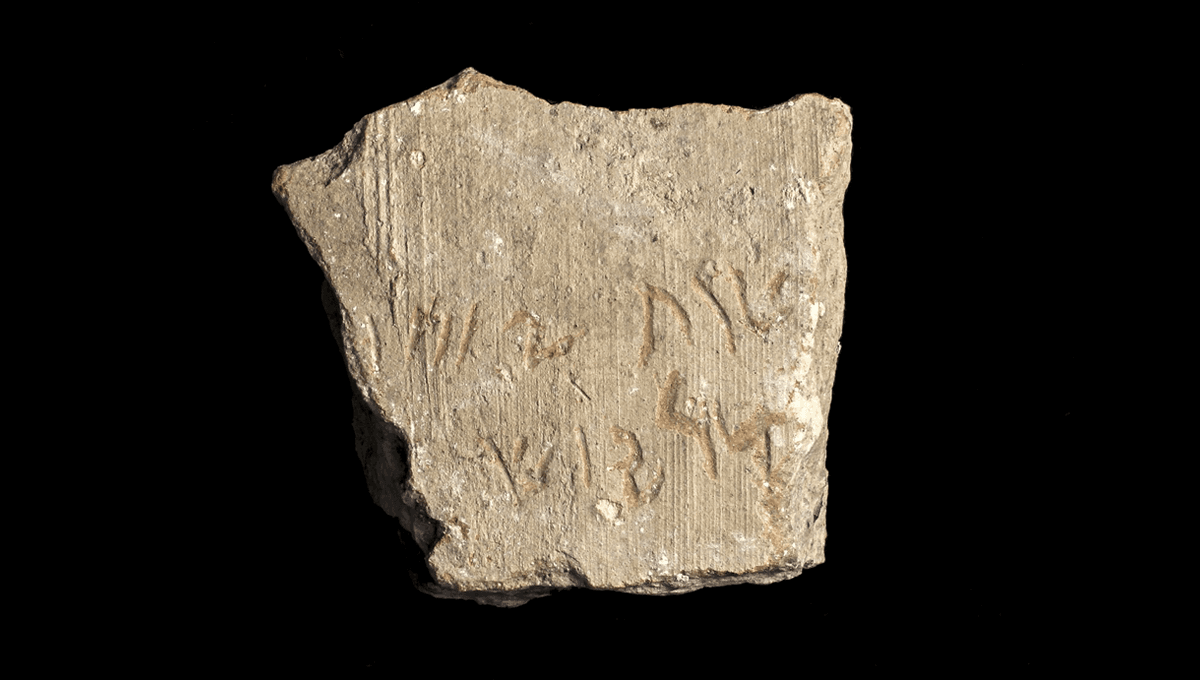
A story out of Israel today provides a reminder that, sometimes, things really can be too good to be true.
It must have felt like the find of a lifetime: a fragment of pottery, discovered serendipitously by a couple of visitors to the Tel Lachish National Park in central Israel, bearing the first-ever written evidence of the ancient Persian king Darius the Great.
“It’s amazing that visitors to the site come across such a rare inscription ‘reviving’ the Persian King Darius known to us from the sources!” said Eli Escuzido, Director of the Israel Antiquities Authority (IAA) in a statement. “His son King Ahasuerus, who ruled ‘from India to Cush’, could never have imagined that we would find evidence of his father in Israel 2,500 years after the dramatic events in his royal court!”
And examinations at the IAA’s Analytical Laboratory and the Hebrew University of Jerusalem only served to make things more exciting. The fired potsherd was inscribed with the words “Year 24 of Darius”, in ancient Aramaic – not only dating the relic to precisely 498 BCE, but also providing the first ever inscription of Darius the Great’s name discovered anywhere in the Middle Eastern nation.
“When I picked up the ostracon and saw the inscription, my hands shook,” said Eylon Levy, international media advisor to the President of the State of Israel, who discovered the potsherd back in December.
“I looked left and right for the cameras, because I was sure someone was playing an elaborate prank on me.”
Well, a prank it was not – but it was a rather unfortunate mistake. Within a couple of days of announcing the find, a correction had been issued: the fragment was not, as had been suspected, a priceless one-of-a-kind relic bearing the name of an ancient king – it was a teaching prop from a few months prior.
“Following the publication, [an] expert who participated in the excavation expedition last August contacted the Israel Antiquities Authority,” explained a statement from the IAA, issued Friday. “[She] admitted demonstrating to a group of students the manner in which sherds were inscribed in ancient times… She then left the sherd on the site, which led to the erroneous identification.”
While the pottery itself was ancient, the inscription – the bit that got everyone so worked up, that is – was not. In fact, it was only about four months old, left by another modern visitor to the park who had simply got a little too enthusiastic about living history.
It wouldn’t have been such a big mix-up, however, had said visitor not been one of the few researchers out there who specializes in ancient Aramaic inscriptions. That meant that, instead of leaving behind a record like “TylER woZ eRE” or something similar, the park was left with what looked for all intents and purposes like an ancient pottery shard complete with equally ancient inscription.
“The event illustrates the dangers of adding modern scripts on ancient artifacts – a phenomen[on] which [has] trouble[d] the entire scientific community for many years,” said IAA chief scientist Gideon Avni.
“On top of the paleographic examination of the sherd by an experienced epigraphist, the sherd was examined in various laboratories and found to be ancient,” he noted. “This once again proves that only finds discovered in controlled archaeological excavations should be considered 100 percent authentic. All other finds should raise questions regarding their authenticity.”
While the IAA points out that events like these are very few in number, they will refresh proper procedures and policies with all foreign expeditions working in the country going forward, the statement confirms.
“The IAA takes full responsibility for the unfortunate event” Avni said. “In terms of ethical and scientific practices, we see this as a very severe occurrence. Leaving the newly inscribed sherd on the site was careless, and led to the mistake done by the researchers and distorted the scientific truth.”
“As an institution that strives for the scientific truth, we are committed to correcting the mistake that was made and making it known to the public,” he confirmed.
Source Link: Oopsie! Ancient Super-Rare Relic Turns Out To Be Accidental Fake